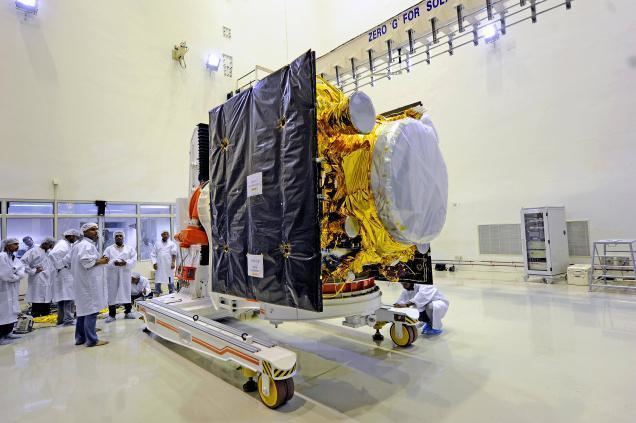COSPAR ID 2013-034A Mission duration 10 years Launch date 1 July 2013 Inclination 28.2° | Operator ISRO SATCAT no. 39199 Inclination 28.2° Period 24 hours | |
 | ||
Similar IRNSS‑1B, IRNSS‑1C, IRNSS‑1D, IRNSS‑1E, IRNSS‑1G | ||
IRNSS-1A is the first navigational satellite in the Indian Regional Navigation Satellite System (IRNSS) series of satellites been placed in geosynchronous orbit.
Contents

Pslv c22 india s first navigational satellite irnss 1a
Satellite
The satellite has been developed at a cost of ₹1.25 billion (US$19 million), and was launched on 1 July 2013. It will provide IRNSS services to the Indian public, which would be a system similar to Global Positioning System (GPS) but only for India and the region around it.

Each IRNSS satellite has two payloads: a navigation payload and CDMA ranging payload in addition with a laser retro-reflector. The payload generates navigation signals at L5 and S-band. The design of the payload makes the IRNSS system inter-operable and compatible with GPS and Galileo. The satellite is powered by two solar arrays, which generate power up to 1,660 watts, and has a life-time of ten years.
Launch

The satellite was launched from the Satish Dhawan Space Centre (SDSC) on 1 July 2013 at 11:41 PM (IST). The launch was postponed from its initial launch date of 26 June 2013 due to a technical snag in the 2nd stage of the PSLV-C22 launch rocket. ISRO then replaced the faulty component in the rocket and rescheduled the launch to 1 July 2013 at 11:43 p.m.

Scientists from the German Aerospace Centre (DLR)'s Institute of Communications and Navigation in Oberpfaffenhofen, Germany, have received signals from IRNSS-1A. On 23 July 2013, the German Aerospace Center scientists pointed their 30-meter dish antenna at Weilheim towards the satellite and found that it was already transmitting a signal in the L5 frequency band.
Failure
Three Rubidium atomic clocks on board IRNSS-1A failed with first failure occurring in July 2016 followed by failure of two other clocks. This made the satellite redundant thus making a need for replacement. Although the satellite performs other functions the data will be coarse, thus cant be used for accurate measurement. ISRO plans to replace it with IRNSS-1H in second half of 2017.
